The Ming Tombs: Where Ancient Royalty Meets Stunning Landscapes
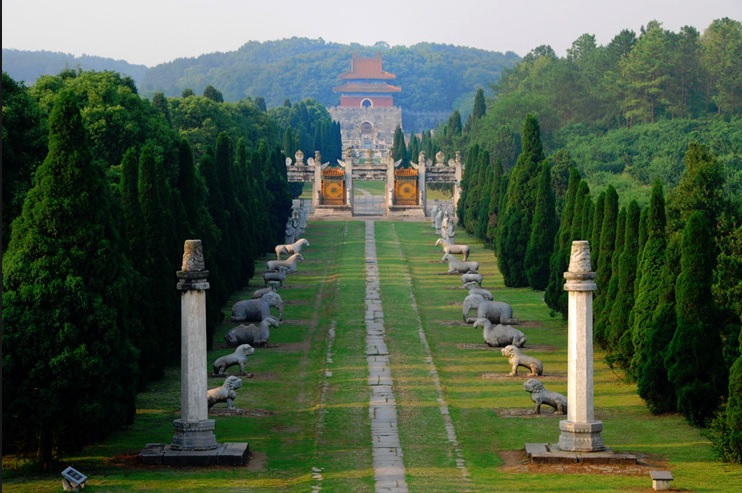
An Essential Guide to Visiting Ming_Tombs
Nestled within the serene embrace of the Tianshou Mountain range, the Ming Tombs, or Ming Shishan Ling, stand as a testament to China’s rich imperial history. Located just a short drive from the bustling streets of Beijing, this sprawling necropolis is the final resting place of 13 emperors from the Ming Dynasty, a period renowned for its cultural and architectural achievements. As you approach the site, you’ll be greeted by a majestic avenue lined with hundreds of stone animals, guardians of the ancient secrets that lie beyond.
Visiting the Ming Tombs is not merely about witnessing the grandeur of imperial burial sites; it’s about immersing yourself in a landscape steeped in Feng Shui, where the harmony of nature reflects the deep respect for the deceased. The tombs, set against lush green mountains and ancient trees, invite travelers to explore not only their historical significance but also the breathtaking scenery that surrounds them. Whether you choose to stroll along the Sacred Way or delve into the mysteries of the underground palaces, each step reveals layers of history intertwined with the natural beauty of the area.
As you embark on this journey through time, prepare to be captivated by the stories of emperors, the artistry of ancient architecture, and the profound tranquility that this UNESCO World Heritage site offers. The Ming Tombs promise an unforgettable experience, blending culture, nature, and history into a harmonious whole, making it an essential stop for any traveler seeking to understand the heart of China.
In This Guide
- An Essential Guide to Visiting Ming_Tombs
- The Rich History and Legends of Ming_Tombs
- Main Highlights: What You Absolutely Can’t Miss
- Planning Your Visit: A Practical Guide
- Tickets: Prices, Booking, and Tips
- How to Get There: A Complete Transportation Guide
- Local Cuisine and Accommodation Nearby
- Frequently Asked Questions
- Final Thoughts on Your Trip
The Rich History and Legends of Ming_Tombs
Nestled in the lush foothills of the Tianshou Mountain range, the Ming Tombs hold a captivating story that intertwines imperial grandeur with the spiritual beliefs of ancient China. This sprawling necropolis is the final resting place of 13 emperors from the Ming Dynasty, which reigned from 1368 to 1644. Spanning a vast area of approximately 40 square kilometers, the site is a testament to the power and influence of the Ming emperors.
The Ming Tombs were meticulously chosen for their geographical advantages, with Feng Shui principles guiding the selection of these sacred grounds. The site is flanked by majestic mountains and nourished by clear springs, embodying the harmonious balance that Feng Shui seeks. Ancient texts suggest that the positioning of the tombs was designed to channel positive energy from the surrounding environment, ensuring blessings for both the deceased and the living.
Construction of the tombs began in the early 15th century during the reign of the third Ming emperor, Yongle. Over the next two centuries, successive rulers expanded the site, creating a series of grand mausoleums that reflect the architectural styles and artistic sensibilities of their times. The most famous of these is the Chang Ling Tomb, the largest and most elaborate, which houses the remains of Emperor Yongle himself, who is credited with moving the capital to Beijing and commissioning the construction of the Forbidden City.
The journey to the Ming Tombs is as enriching as the destination itself. Visitors traverse the Sacred Way, a picturesque pathway lined with stone statues of animals and officials, symbolizing the guardianship over the emperors’ eternal rest. This pathway not only serves as a physical route but also as a metaphorical connection between the earthly realm and the afterlife, embodying the Ming belief in the importance of honoring ancestors.
Legends surrounding the Ming Tombs abound, with tales of hidden treasures and ancient curses. Some whisper of the elaborate burial practices that took place, where emperors were laid to rest with items of great value, intended to accompany them in the afterlife. However, the site also bears the weight of historical tragedies, including the looting of tombs during the upheavals of later dynasties, which only adds to the mystique that envelops this ancient site.
Today, the Ming Tombs stand not just as a reminder of a glorious past but as an enduring symbol of China’s rich cultural heritage. Visitors are invited to explore this historic site, where each stone tells a story, and every pathway leads to the echoes of a bygone era. Whether you are drawn by history, architecture, or the serenity of nature, the Ming Tombs offer a profound glimpse into the spiritual and imperial legacies of one of China’s most influential dynasties.
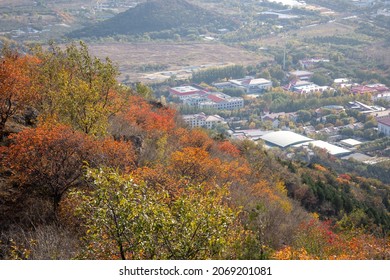
Ming_Tombs.
Main Highlights: What You Absolutely Can’t Miss
Visiting the Ming Tombs is a journey steeped in history and natural beauty, offering a glimpse into the grandeur of the Ming Dynasty. Here are the main highlights that you absolutely can’t miss during your trip to this UNESCO World Heritage Site.
1. The Sacred Way (神道)
As you approach the tombs, you’ll navigate the Sacred Way, a picturesque 7-kilometer pathway lined with stunning stone statues. These statues depict various animals and officials, serving as guardians of the tombs. The serene atmosphere and beautifully maintained surroundings create a sense of reverence, making it a perfect starting point for your exploration.
2. Ming Tombs Underground Palace (定陵)
Don’t miss the opportunity to visit the Underground Palace in Dingling, one of the 13 tombs. This fascinating site features a grand burial chamber adorned with intricate carvings and artifacts that provide insight into the burial customs of the Ming emperors. It’s an impressive showcase of ancient architecture and craftsmanship.
3. The Twelve Emperors’ Tombs
The Ming Tombs complex is home to the mausoleums of 13 emperors. While not all tombs are open for public viewing, exploring the grounds and learning about the emperors’ lives adds depth to your understanding of Chinese history. Each tomb’s unique design reflects the emperor it was built for, showcasing the rich cultural heritage of the era.
4. Tianshou Mountain Views
The Ming Tombs are nestled at the base of the Tianshou Mountain range, offering breathtaking views of lush greenery and rugged landscapes. Take a moment to appreciate the natural beauty that surrounds you, which has been revered for its Feng Shui. The harmony of the mountains, wind, and water is believed to bring positive energy, enhancing the experience of visiting the tombs.
5. Shengong Shengde Stele Pavilion (神功神德碑亭)
At the entrance to the Sacred Way lies the Shengong Shengde Stele Pavilion, a significant monument that commemorates the virtues of the Ming emperors. The pavilion features inscriptions that reflect the philosophy and beliefs of the time. It’s a perfect spot to pause, soak in the historical significance, and take some memorable photos.
6. Local Cuisine
After exploring the tombs, indulge in some local cuisine at nearby restaurants. The region offers traditional Beijing dishes that are sure to tantalize your taste buds. Try the local specialties at Jiu Long Chi Farmhouse, which is just a short drive away, and savor the flavors of the Ming Dynasty’s rich culinary heritage.
7. Nearby Attractions
While at the Ming Tombs, consider visiting the nearby Dingling Underground Palace and the Stone Animal sculptures. These attractions add to the historical context of your visit and provide additional insight into the Ming Dynasty’s impressive architectural and artistic achievements.
Tips for Your Visit
- Plan Your Time: Allocate at least half a day to fully explore the Sacred Way and the tombs. If possible, take a guided tour to enrich your understanding.
- Dress Comfortably: Wear comfortable shoes, as you’ll be walking along the Sacred Way and exploring various sites.
- Consider Guided Tours: Many tours combine visits to the Ming Tombs with the Great Wall, offering a comprehensive experience of Beijing’s historical landmarks.
A visit to the Ming Tombs is not just about seeing the past; it’s about experiencing the profound connection between history and nature. Whether you’re an avid history buff or a casual traveler, the Ming Tombs promise an unforgettable adventure.
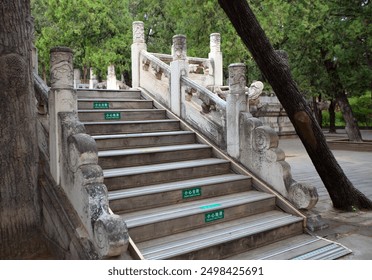
Ming_Tombs.
Planning Your Visit: A Practical Guide
Visiting the Ming Tombs (明十三陵景区) is a captivating journey into China’s imperial past, nestled just outside Beijing amidst the stunning backdrop of the Tianshou Mountain range. Here’s a practical guide to help you plan your visit effectively.
Getting There
The Ming Tombs are located approximately 40 kilometers (about 25 miles) from central Beijing. The easiest way to reach the site is by taxi or rideshare, which can take around 40 minutes to an hour depending on traffic. Alternatively, you can take public transportation by catching the subway to Changping Station, followed by a local bus or taxi to the tombs.
Opening Hours
The site is open daily from 9:00 AM to 9:00 PM. To make the most of your visit, consider arriving early in the day to avoid the crowds and to enjoy the serene atmosphere.
Entrance Fees
Admission to the Ming Tombs is relatively affordable, with entrance tickets starting around $9. Guided tours, which can enhance your experience with historical insights, are also available for an additional fee. Many tour options are available that bundle visits to the Ming Tombs with other attractions like the Great Wall of China, so consider your itinerary before booking.
What to Expect
As you approach the tombs, you will be greeted by hundreds of stone animals lining the Sacred Way, a picturesque pathway that leads you through lush greenery and ancient trees over 800 years old. The area is renowned for its Feng Shui, believed to channel positive energies that honor the deceased while blessing the living.
While many visitors anticipate exploring the tombs themselves, it’s important to note that you may only access the surrounding areas and not the actual burial sites. The main attractions include:
- The Sacred Way: A 7-kilometer path adorned with statues of mythical creatures and officials.
- Dingling Underground Palace: One of the few tombs open to the public, where you can explore its burial chambers and artifacts.
- Scenic Views: The surrounding mountains offer breathtaking scenery, making it a perfect spot for photography enthusiasts.
Tips for Your Visit
-
Dress Comfortably: Wear comfortable shoes, as you will be walking quite a bit along the Sacred Way and exploring the grounds.
-
Stay Hydrated: Bring a water bottle, especially during warmer months, as you’ll be outdoors for extended periods.
-
Plan Ahead: If you intend to visit multiple attractions in one day, consider booking a guided tour that includes the Ming Tombs and other nearby sites such as the Great Wall at Mutianyu or the Summer Palace.
-
Timing: Weekdays tend to be less crowded than weekends, making for a more pleasant experience.
-
Respect the Site: As a site of historical significance, be mindful of your surroundings and adhere to any posted guidelines to help preserve the integrity of the area.
Nearby Attractions
If time allows, explore other nearby attractions, such as the Dingling Underground Palace, the Stone Animal statues, or enjoy a meal at Jiu Long Chi Farmhouse, known for its authentic Beijing specialties.
Conclusion
A visit to the Ming Tombs offers a unique glimpse into the grandeur of the Ming Dynasty and the respect for ancestral traditions in Chinese culture. By planning your trip carefully and being prepared for your adventure, you’ll ensure a memorable experience that enriches your understanding of China’s rich history.
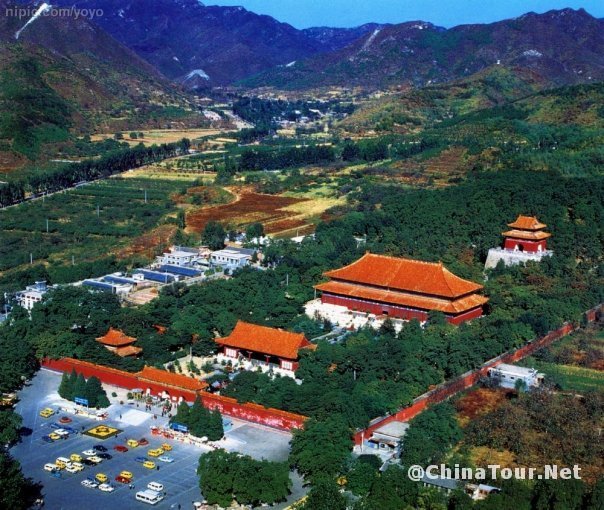
Ming_Tombs.
Tickets: Prices, Booking, and Tips
When planning your visit to the Ming Tombs, it’s essential to understand the ticketing options available, along with valuable booking tips to enhance your experience. The Ming Tombs, a UNESCO World Heritage site, is located a short drive from Beijing and offers a glimpse into China’s imperial past.
Ticket Prices
- Entrance Fee: The basic entrance ticket to the Ming Tombs is approximately $9. This ticket grants you access to the main areas, including the Sacred Way and the surrounding gardens.
- Guided Tours: For a deeper dive into the history and significance of the tombs, consider booking a guided tour. Prices for guided options vary, typically ranging from $120 to $238, depending on the inclusions such as transportation, meals, and additional sites like the Great Wall or Summer Palace.
- Private Tours: If you prefer a more personalized experience, private tours can be arranged for around $180 to $628, depending on the length and destinations included in the itinerary.
Booking Tips
- Advance Reservations: While you can buy tickets on-site, booking in advance is highly recommended, especially during peak tourist seasons. Many tour operators offer free cancellation options, providing flexibility should your plans change.
- Combine Experiences: Consider purchasing packages that combine visits to the Ming Tombs with other nearby attractions, such as the Great Wall at Mutianyu or the Summer Palace. These all-inclusive tours often provide better value and save you the hassle of coordinating multiple tickets.
- Transportation: Public transportation options exist, but they may not be the most convenient. Booking a tour that includes transportation can enhance your experience by ensuring a smooth journey to and from the site.
- Check for Discounts: Keep an eye out for special offers or discounts, especially for group bookings or family packages. Certain travel platforms may also offer reduced prices for early bookings.
Visiting Hours
The Ming Tombs are open daily from 9:00 AM to 9:00 PM, making it convenient to fit a visit into your itinerary. However, arriving early in the day can help you avoid crowds and enjoy a more peaceful exploration of this historical site.
With these insights, you’re well-equipped to make the most of your visit to the Ming Tombs. Immerse yourself in the beauty and history of this remarkable destination, and don’t forget your camera to capture the breathtaking scenery along the Sacred Way!
How to Get There: A Complete Transportation Guide
Getting to the Ming Tombs can be an adventure in itself, combining a taste of historic Beijing with convenient travel options. Here’s a comprehensive guide to ensure your journey to this impressive site is smooth and enjoyable.
By Car
Self-Driving
If you’re comfortable driving in China, renting a car is a great option. The Ming Tombs are approximately 50 kilometers (31 miles) from downtown Beijing. The journey typically takes about an hour, depending on traffic. You can take the Badaling Expressway (G6) and follow the signs to the Ming Tombs area. Parking is available on-site.
Ride-Sharing Services
For a more relaxed travel experience, consider using ride-sharing apps like Didi. Simply input “Ming Tombs” or “Ming Shisan Ling” as your destination, and a driver will pick you up from your location in Beijing. This option allows you to enjoy the scenery without the hassle of navigation and parking.
Public Transportation
Subway and Bus
1. Subway: Start your journey by taking Line 13 of the Beijing Subway to the “Shijingshan” Station. From there, transfer to Line 8 and head to “Beijing North” Station.
- Bus: At Beijing North Station, board Bus 919 (or 919 Express) which takes you directly to the Ming Tombs. The bus ride takes around 1.5 hours, so be sure to prepare for a longer trip.
This option is budget-friendly, though it may require patience during peak hours due to crowded conditions.
Guided Tours
For those who prefer a more structured visit, various tour operators offer day trips from Beijing that include transportation to the Ming Tombs. Many of these tours combine visits to other nearby attractions, like the Great Wall at Mutianyu or the Sacred Way. Here are a few popular options:
- All-Inclusive Day Tours: These often include guided commentary, entrance fees, and sometimes meals. Prices typically start at around $87 per person.
- Private Tours: For a more personalized experience, consider booking a private tour that caters to your interests and schedule. Prices usually start around $120 and can include additional perks such as a knowledgeable guide.
By Train
High-Speed Train
While not the most direct route, taking a high-speed train from Beijing to Changping District can be an exciting option. Board at Beijing North Railway Station and travel to Changping Station. From there, taxis and local buses can take you to the Ming Tombs, about 25 kilometers away. The train ride typically takes around 30 minutes, giving you a taste of China’s impressive rail system.
Tips for Your Visit
- Best Time to Visit: The Ming Tombs are open daily from 9:00 AM to 9:00 PM, but early mornings or late afternoons are often less crowded.
- Entrance Fees: Remember to check for any entrance fees or guided tour costs ahead of your visit, as these can vary.
- Language: While many signs are in English, having a translation app can be handy, especially when interacting with locals.
- Weather Considerations: If you plan to visit in the summer, prepare for heat and humidity; in winter, be ready for cold temperatures.
By following this guide, your journey to the Ming Tombs will be as enriching as the site itself. Enjoy your adventure through this magnificent piece of history!
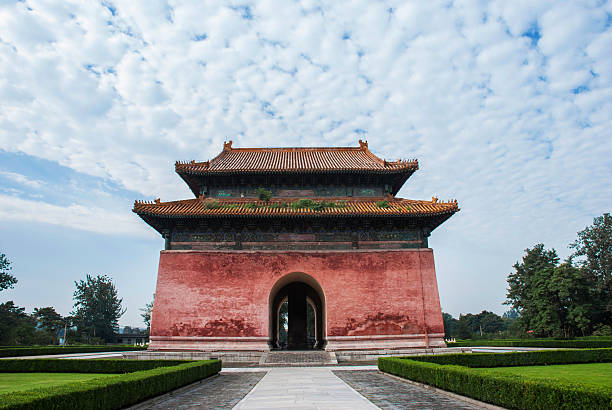
Ming_Tombs.
Local Cuisine and Accommodation Nearby
When visiting the Ming Tombs, international travelers will find a delightful mix of local cuisine and comfortable accommodations nearby, enhancing their experience of this historical site.
Culinary Delights
-
Jiu Long Chi Farmhouse
Just 1.6 miles away from the Ming Tombs, Jiu Long Chi Farmhouse offers a taste of authentic Beijing specialties in a cozy setting. The menu features classic dishes made with fresh, local ingredients. Don’t miss their signature Peking duck, a must-try for any visitor to the region. The rustic décor and warm hospitality create an inviting atmosphere perfect for relaxing after a day of exploration. -
Local Street Food Stalls
As you approach the Ming Tombs, keep an eye out for street food vendors offering traditional snacks. Try jianbing (Chinese crepes), baozi (steamed buns), or chuanr (skewered meats) for a quick and delicious bite. These options not only satisfy hunger but also provide a glimpse into the local culture.
Comfortable Stays
For those looking to extend their visit to the Ming Tombs, several accommodations provide comfort and convenience:
-
Beijing Shisanling Ming Dynasty Waxworks Palace Hotel
Located just a stone’s throw from the tombs, this hotel is known for its unique blend of history and modern amenities. Guests can enjoy spacious rooms with stunning views of the surrounding landscape, along with easy access to the nearby attractions. The on-site restaurant offers a variety of Chinese dishes, allowing you to relax after a day of sightseeing. -
Changping Seven-Hole Bridge Inn
This charming inn is a short drive from the Ming Tombs and offers a peaceful retreat amidst nature. With a focus on traditional Chinese hospitality, the inn features comfortable rooms and a garden area ideal for unwinding. Guests can savor homemade meals prepared with local ingredients, providing a true taste of Beijing. -
Local Guesthouses
For a more intimate experience, consider staying at one of the local guesthouses. Many of these family-run establishments offer personalized service and a chance to engage with local culture. Enjoy home-cooked meals and the opportunity to learn about the history and significance of the Ming Tombs from your hosts.
With a variety of culinary options and comfortable accommodations, your visit to the Ming Tombs will be enriched by the flavors and warmth of the local community. Whether you’re savoring a traditional meal or unwinding in a cozy inn, the experience promises to be memorable.
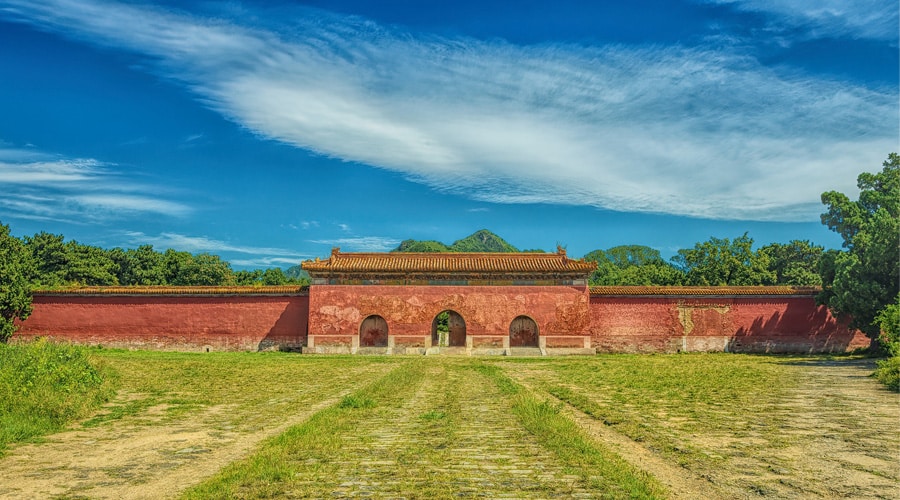
Ming_Tombs.
Frequently Asked Questions
Frequently Asked Questions about the Ming Tombs
-
What are the Ming Tombs and why are they significant?
The Ming Tombs are the burial site of 13 emperors of the Ming Dynasty, located approximately 40 kilometers northwest of Beijing. They are significant for their historical, cultural, and architectural value, showcasing traditional Chinese burial practices and Feng Shui principles. The site includes impressive mausoleums set against a backdrop of stunning natural scenery. -
How do I get to the Ming Tombs from Beijing?
You can reach the Ming Tombs by car, taxi, or public transportation. The most convenient way is to take a taxi or book a guided tour. If you prefer public transport, you can take subway line 8 to the Changping station and then transfer to a local bus or taxi to the tombs. -
What are the opening hours?
The Ming Tombs are open daily from 9:00 AM to 9:00 PM. It’s advisable to arrive early to fully explore the area and avoid crowds, especially during peak tourist seasons. -
Is there an entrance fee?
Yes, there is an entrance fee to visit the Ming Tombs. Prices may vary depending on whether you choose guided tours or additional services. Tickets generally start at around $9, with options for guided tours available for an additional cost. -
What should I wear when visiting the Ming Tombs?
Wear comfortable shoes and clothing, as you will be doing quite a bit of walking, especially if you choose to explore the Sacred Way, which is lined with statues and stone animals. Weather-appropriate attire is also recommended, as the site can be hot in summer and chilly in winter. -
Are there guided tours available?
Yes, there are numerous guided tour options available, ranging from half-day excursions to full-day packages that may include other nearby attractions like the Great Wall. These tours often provide transportation and an informative guide to enhance your experience. -
What is the Sacred Way, and should I visit it?
The Sacred Way is a picturesque path leading to the tombs, lined with stone statues of animals and officials. A visit to the Sacred Way is highly recommended as it offers a glimpse into ancient Chinese burial customs and beautiful scenery, making it a perfect introduction to the Ming Tombs. -
Can I visit the Ming Tombs with children?
Absolutely! The Ming Tombs are family-friendly and offer plenty of space for children to explore. However, keep in mind that younger kids may tire easily from walking, so plan for breaks and bring snacks to keep them energized during your visit.
Final Thoughts on Your Trip
As your journey through the Ming Tombs draws to a close, take a moment to reflect on the profound history and serene beauty that envelops this iconic site. Nestled in the embrace of the Tianshou Mountain range, the tombs of 13 Ming emperors stand as a testament to China’s rich past and the enduring legacies of its rulers. The intricate pathways and stone guardians that greet you along the Sacred Way invite contemplation, offering a glimpse into the elaborate rituals that honored life and death in ancient times.
While the tombs themselves may not be fully accessible, the lush landscapes and the harmonious Feng Shui that surrounds them create an atmosphere of tranquility and reverence. The stunning natural scenery, with its towering trees and crystal-clear springs, serves as a reminder of the connection between nature and the spirit world. Each step you take here is an invitation to appreciate the balance of life, the beauty of the surroundings, and the whispers of history that echo through the ages.
As you leave, carry with you the stories of these emperors and the lessons learned from their journey to the afterlife. Whether you’ve come for history, culture, or simply to enjoy the breathtaking views, the Ming Tombs promise an experience that lingers long after you’ve departed. Embrace the spirit of exploration and let the echoes of the past inspire your future travels across this magnificent land.